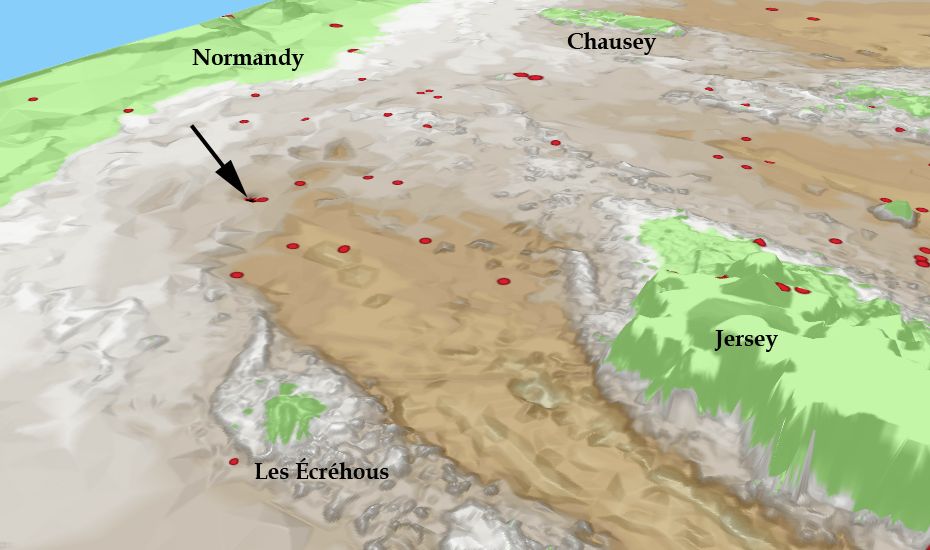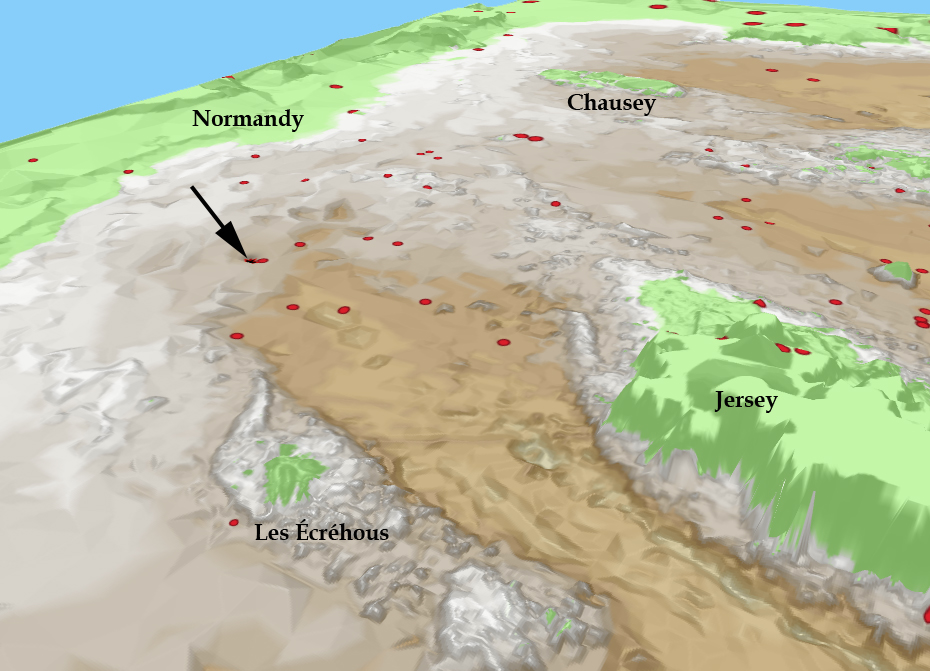


New evidence shows that Jersey was hit by a massive earthquake 11,000 years ago, triggering a huge mudslide that swept across the island.
Local researchers have examined core samples dug from the seabed between Jersey and Normandy.
They reveal evidence of the island’s destructive past - but also the damage being done to our environment today.
Dr Paul Chambers and Dr Ralph Nichols are the first people to study the samples, which were lifted by the JEC when surveying the seabed before laying its electricity cable to France in 2016.
The cores contain layers of history going backs tens of thousands of years, when sea levels were far lower than today and Paleolithic hunter-gatherers wandered the forests and river valleys between the island and France at the end of the last Ice Age.

Pictured: A birds-eye view of what the Bay of Granville would have looked like 11,000 years ago, when sea levels were 130m lower than they are now. Today's islands and reefs would have been grassy mountains surrounded by river valleys and woodland, where our early ancestors hunted. The arrow indicates where the core, indicating that a huge earthquake had struck, was taken from.
Dr Chambers, who is the Government’s Marine and Coastal Manager, said: “This is a personal project, so there is of course, a personal motivation to solve a mystery. But this research could help with Jersey’s government planning for climate change because they show us how rapidly such changes have happened in the past.
“In one core, which was taken about two-thirds of the way between Jersey and Normandy, we found a layer of fine loess sediment, which is the crumbly earth that you’ll find on Green Island.
“An unwritten rule of geology is that you don’t find loess preserved underwater because it is too light and fine, but we found it 20m beneath the surface.
“We then asked for help from Rennes University, who have expertise in the region’s geology, to look at why, and they found that it was buried under a thick layer that must have been a mudslide triggered by an enormous earthquake."

Pictured: Report co-author Dr Paul Chambers. When not engaged in amateur geology, Dr Chambers is a member of the Government's Marine Resources team.
He continued: “Jersey isn’t on the edge of a tectonic plate but we’re certainly not immune from them.
"People may remember the one in July 2014, there was a real humdinger recorded in the 1770s and there is evidence that we had a massive one in the 9th century, which caused a tsunami. It certainly gives you food for thought.”
But the researchers also found more immediate food for thought.
“We found microplastics at the top of most cores and also the slipper limpet, which is an invasive species which has accumulated in vast numbers since the 1960s and killed off large areas of the seabed.
“The last 50 years or so cover the 25-40 cm down in the cores. It suggests a significant change in the sediment texture and a possible drop in biodiversity.”
Pictured: Dr Ralph Nichols examines one of the cores.
Dr Chambers and Dr Nichols’ work has recently been published in The Journal of the Geological Society.
Comments
Comments on this story express the views of the commentator only, not Bailiwick Publishing. We are unable to guarantee the accuracy of any of those comments.